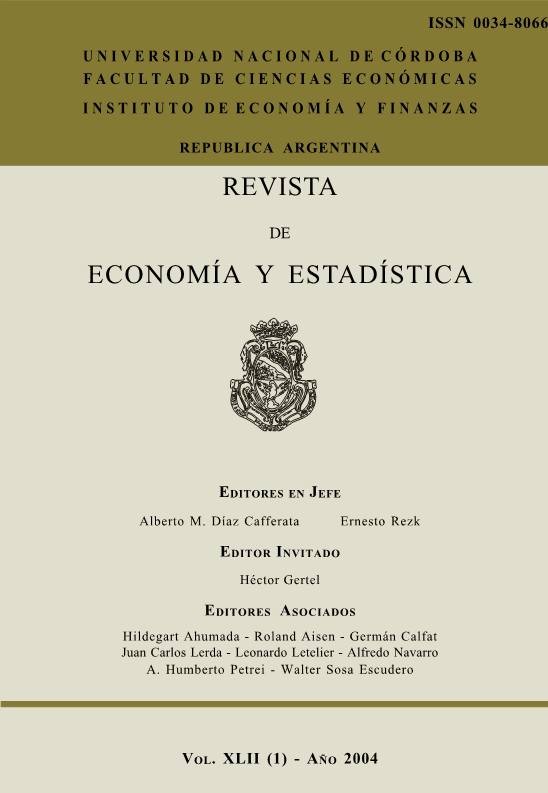Dropout at the intermediate level of education in Argentina. Calculation of dropout rates and identification of some associated factors
DOI:
https://doi.org/10.55444/2451.7321.2004.v42.n1.3799Keywords:
desertion , secondary school , education, ArgentinaAbstract
In this paper the Argentina's secondary school drop out is studied throughtwo aspects: the estimation of the drop out rates by regions, sex and years,and the identification, by applying a mathematic model, of some factorsthat are significant to explain the likelihood of an student leaves schoolbefore finishing his studies. The data used to perform the estimations weretaken outside the educational system, since they were provided by theHousehold Survey (and its Education Module) collected in 1998 by theNational Statistic Office. Consistency between results that were obtainedby using estimations based on Household Survey information and theindicators produced by the educational system, was acceptable, and, inaddition, the former had the advantage of allowing to add other socioeconomicvariables useful for the analysis. Results revealed that the dropout rate decreased up to the middle of the 60' decade, and then began anincreasing trend that became heavy from the beginning of the 80' decade.They also have showed that rates differ significantly as differences betweensex, and country regions were introduced. The applied logistic modelallowed to select some risk variables that account for the probability ofdrop out. They were: vocation for studying, need to work, the student ageat the moment of accessing to the secondary school, to repeat in primarylevel, type of secondary school, and sex.
Downloads
Downloads
Published
Issue
Section
License
Copyright (c) 2004 Roberto F. Giuliodori, María Andrea Giuliodori, Mariana González

This work is licensed under a Creative Commons Attribution-NonCommercial-NoDerivatives 4.0 International License.
Authors who have publications with this journal agree to the following terms:
Authors retain their copyright and grant the journal the right of first publication of their work, which is simultaneously subject to the Creative Commons Attribution-NonCommercial-NoDerivatives 4.0 International License that allows third parties to share the work provided that its author and first publication in this journal are indicated.
Authors may adopt other non-exclusive licensing arrangements for distribution of the published version of the work (e.g. depositing it in an institutional telematic archive or publishing it in a monographic volume) as long as the initial publication in this journal is indicated.
Authors are allowed and encouraged to disseminate their work via the Internet (e.g. in institutional telematic archives or on their website) before and during the submission process, which can lead to interesting exchanges and increase citations of the published work. (See The Open Access Effect)










